Exploring Winnipeg Public Art Via An App
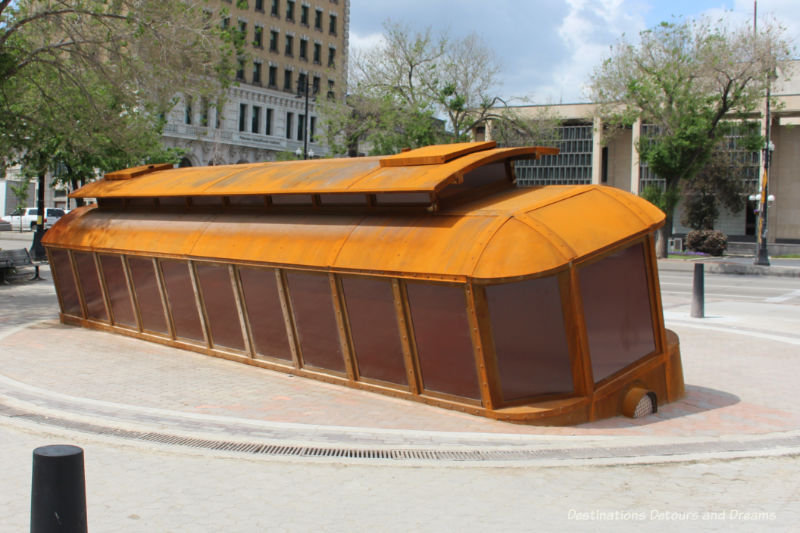
About public art in Winnipeg, Manitoba, Canada and the WAC Public Art app
I enjoy coming across public art when I explore a city. Not only does public art beautify a city, it reflects its culture, showcases its history, and celebrates its character.
While I may appreciate the looks of a piece of public art or be intrigued by the ideas it sparks, its significance and relevance to the city may not always be apparent without further information. That can be particularly true when I explore a new city, but it is also sometimes true at home.
My home city of Winnipeg has a Public Art Program run by the Winnipeg Arts Council (WAC). The program works to “develop and integrate art into our public spaces where ideas can be encountered on a daily basis.” In 2020 they released an app (available on iOS and Android platforms). This application helps you find pieces of public art and learn more about them and their significance. There are over 60 pieces of public art featured in the app. You can find information about the app and how to download it here.
WAC App Components
Explore Public Art
The application features a map function enabling you to find pieces of public art near your current location. Alternatively, you can browse the collection of public art and use the location and direction information to visit pieces of interest.
About Public Art Pieces
Information about the public art pieces includes the names of the artists, construction materials, and overviews of the meaning of the pieces.
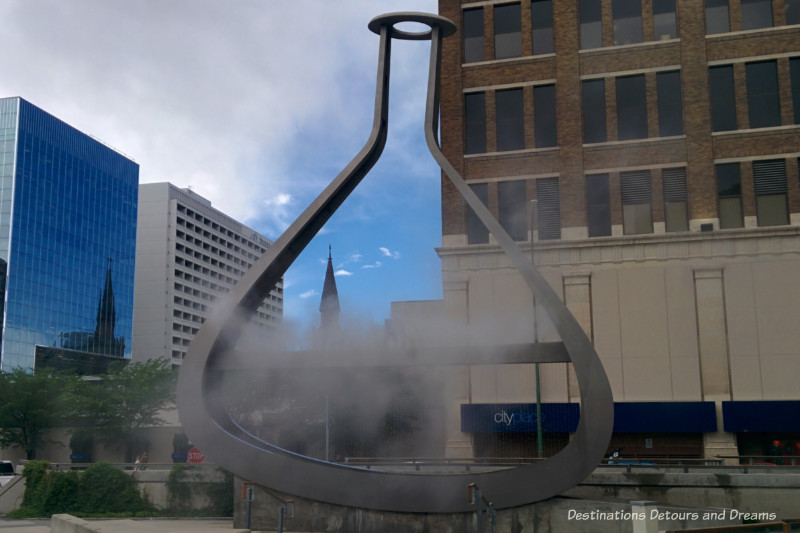
Constructed using stainless steel, water, lights, fog, and weather, the sculpture emptyful by Bill Pechet has become an iconic Winnipeg symbol since its installation in 2012. At night the sculpture is lit with lights in cool colours of blue, green, aqua, and white with the occasional burst of a hot colour. This piece is a personal favourite.
The WAC app says this about it: “emptyful is inspired by the idea that Winnipeg and the surrounding prairies are full of emptiness – a boundless space where phenomena such as weather, light, seasons and human endeavour come and go. This shape also suggests a science experiment as a way to acknowledge that the city itself is a constant experiment, the product of imagination and knowledge.”
The Artist’s Own Words
Some pieces featured in the app included a short audio recording (usually around a minute long) featuring the artist talking about the piece.
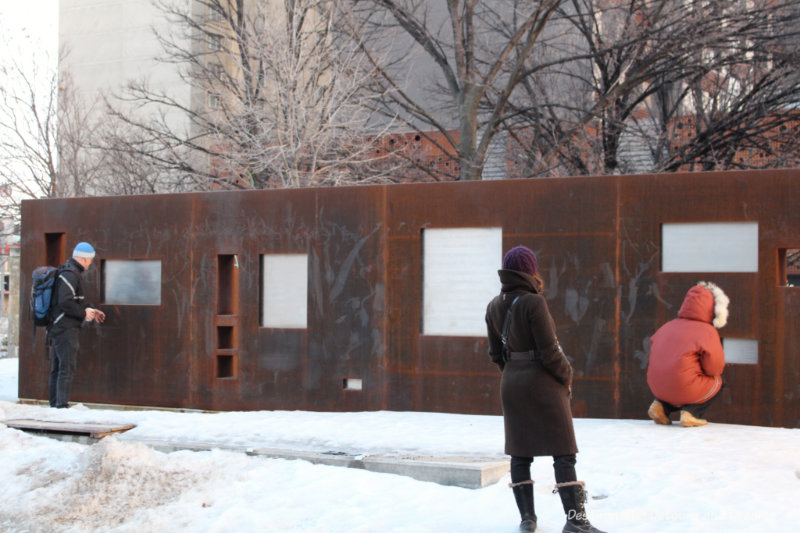
Sentinel of Truth is located in Milennium Library Park, a park behind the downtown branch of the Winnipeg Library. The wall of weathering steel features short excerpts of text from fiction, poetry, and non-fiction.
In the artist recording about this piece, Darren Stebelski said that when he created Sentinel of Truth in 2012 he was primarily concerned about censorship and the ability of power to distort the truth. He saw the wall as being a library, a protector of the fragile truths within.
Did You Know?
An interesting piece of information about the piece or the event it represents appears under the “Did You Know?” heading.
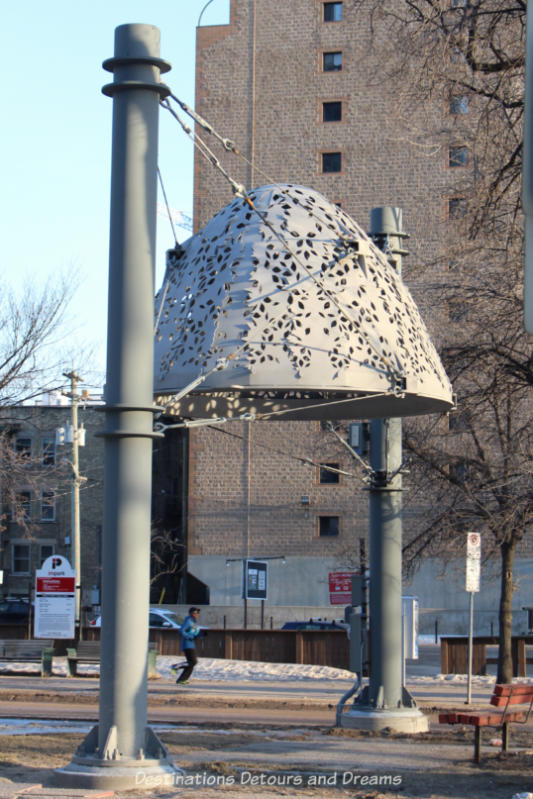
Located on the median along Broadway Street in downtown Winnipeg, heaven between by Bill Pechet references the domes of two buildings at either end of this stretch of Broadway: Union Station and the Legislative Building. The artwork is patterned with cut-out silhouettes of elm leaves. The trees that line Broadway were planted over a hundred years ago.
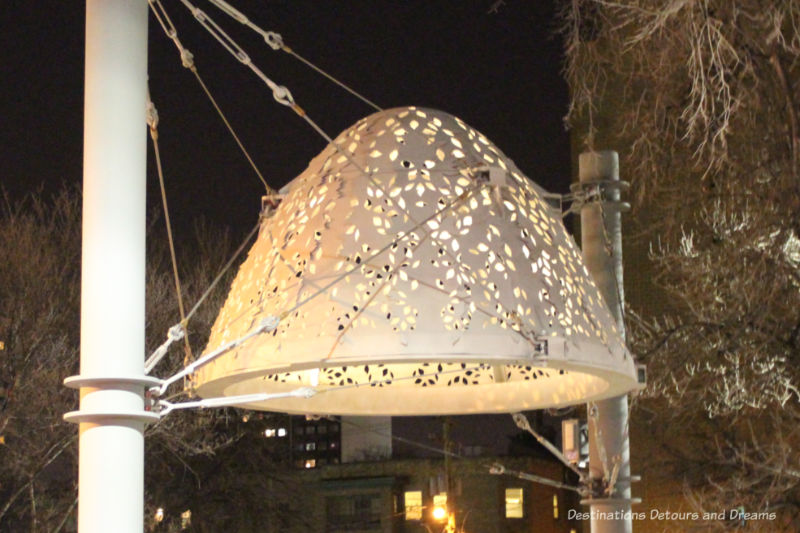
The Did You Know fact featured for this piece: The grand boulevards of Broadway were modelled after the Washington Mall in the US capitol.
Can You Guess
A multiple-choice question encourages you to guess something about another fact.

Bloody Saturday by Bernie Miller and Noam Gonick was erected in Pantages Plaza across from City Hall in June 2019 to commemorate the 100th anniversary of the 1919 Winnipeg General Strike. The art piece is described as “the ghost of a trolley tipped in protest.” It represents a pivotal event in the six-week strike that became the platform for future Canadian labour reforms.
The Can You Guess question posed in the app: How many workers participated in the 1919 Winnipeg General Strike to protest? Choices are: 8,000; 17,000; 35,000. When you select the right answer by tapping on the circle beside the choice, a green check mark appears in the circle. In this case, the answer is 35,000.
What Do You Think?
The What do you think section poses a question to ponder. The question may be related to the something about the piece itself, the way the piece interacts with the space around it, the role of art, larger societal questions, or historical perspectives.
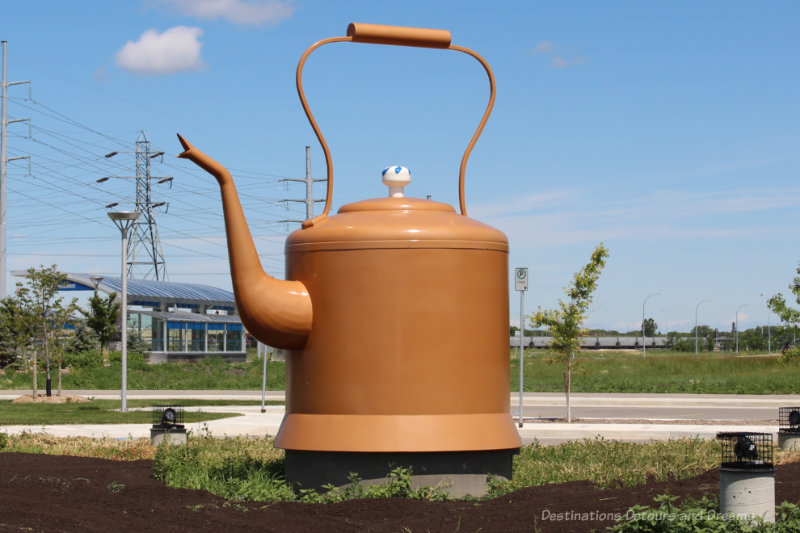
Rooster Town Kettle remembers a Métis road allowance community, Rooster Town, that existed on the outskirts of Winnipeg from 1901 to 1961. At its peak it housed 59 families and a population of 250. The community was bulldozed to make way for a shopping mall and a high school. The kettle symbolizes the warmth and sharing artist Ian August recalls. “When there was a knock on the door the immediate response was to shout, ‘come on in there’s room’ while jumping up to make tea.” The kettle also raises the issue of how people living on the fringe of Canadian city could have unacceptable access to clean water, an issue still relevant to many Canadians living on reserves.
The What Do You Think section includes the following: Many racist and harmful stereotypes about Rooster Town and its residents were propagated in the media in the 1950s to support the forced removal of the settlement for future development of a mall and high school. How do the ways things are portrayed in the media influence public opinion?
Engage
An Engage section at the end of the information on each piece contains a few Instagram posts that feature the art work. Often, there is additional information imbedded in the post about the piece, what it represents, and the issues it raises.
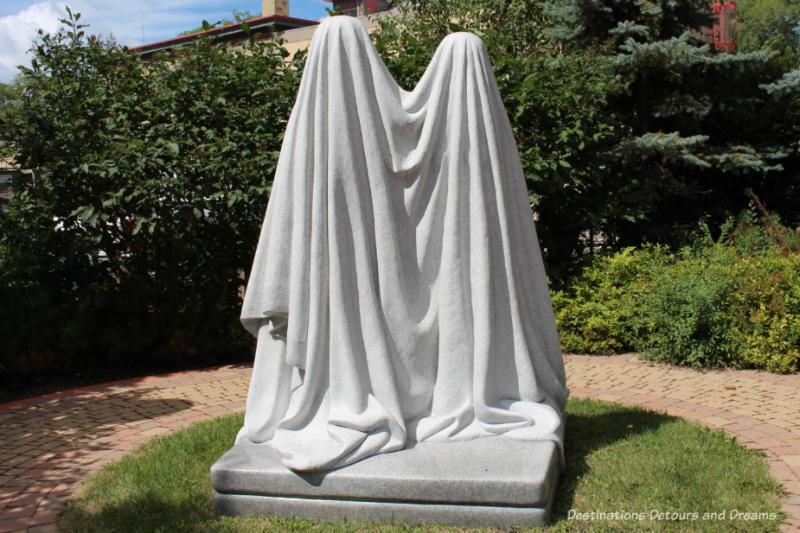
Monument by Michel de Broin is located in the Jardin de sculptures at La Maison des artistes visuels francophones. It is described in the app as “using a classical form and material to create a contemporary reflection on identify and representation. . . the sculpture remains a mystery onto which the viewer can project their own meaning.”
The posts in the Engage section contain a great deal of additional information. One post says it references The Lovers painting by Rene Magritte and classical monumental structure while breaking away from recognizable forms. The contemporary spin was influenced by the draping of snow on burlap-covered cedar trees. Another post has placed these words on its photograph “art as cloaked visions shrouded possibilities yours to imagine.”
A Few Other Winnipeg Public Art Pieces
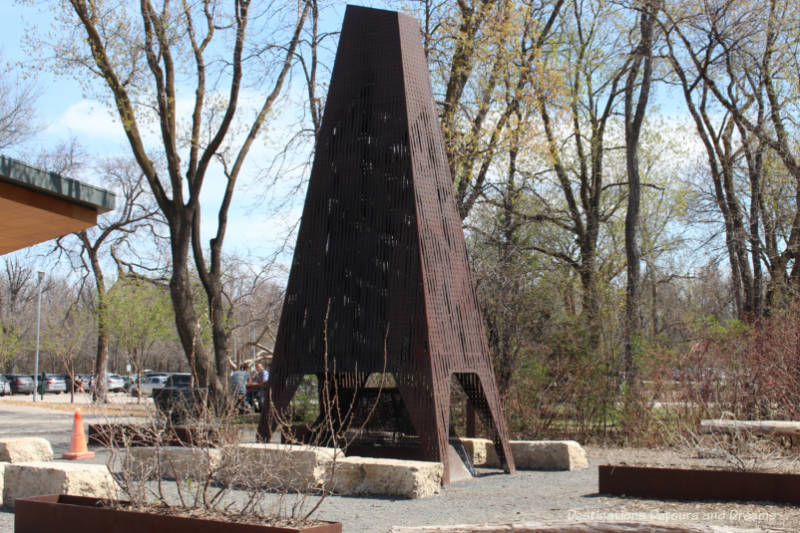
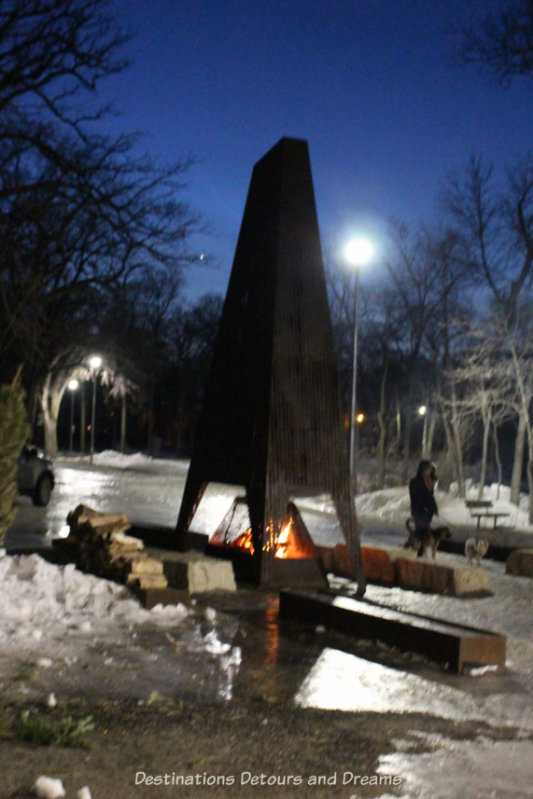
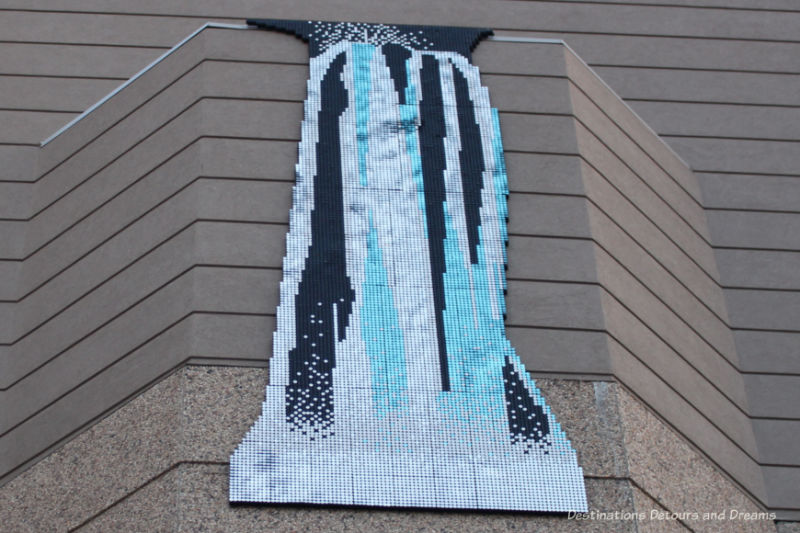
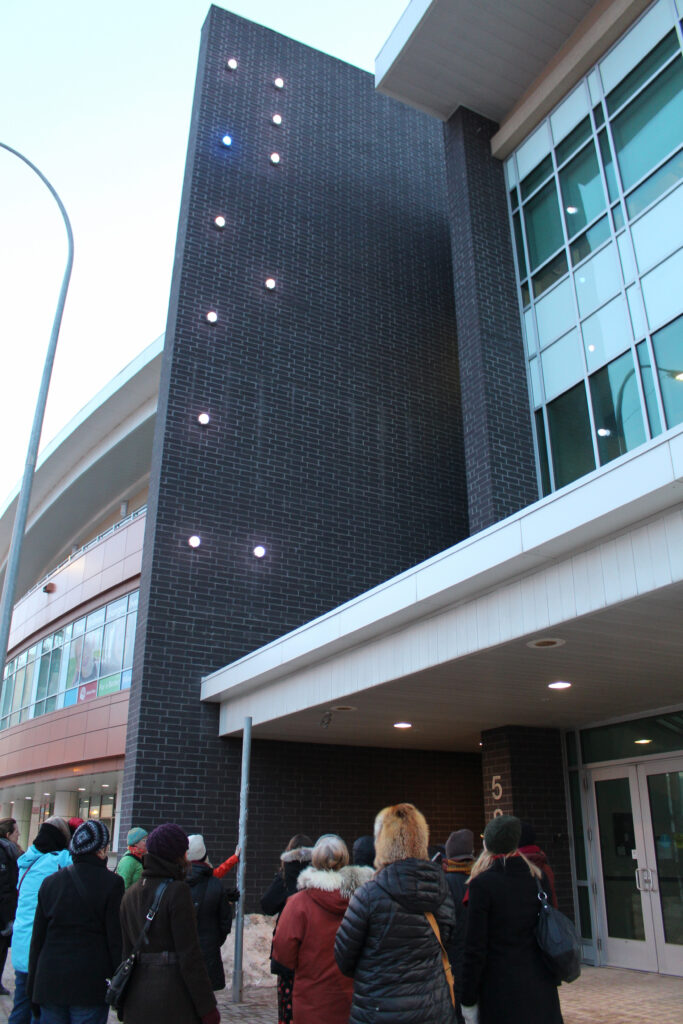
Public Art In Other Cities
Now that I have seen how the WAC app works, I will look for other public art apps in cities I travel to in the future. The app will be a good way to incorporate exploring public art into my discovery of the city and to gain a better understanding of a public art piece I may stumble across. If there is no app, a few minutes on the public art website before I set out on daily explorations may help me zero in on public art pieces in the vicinity.
Never miss a story. Sign up for Destinations Detours and Dreams free monthly e-newsletter and receive behind-the-scenes information and sneak peeks ahead.
PIN IT
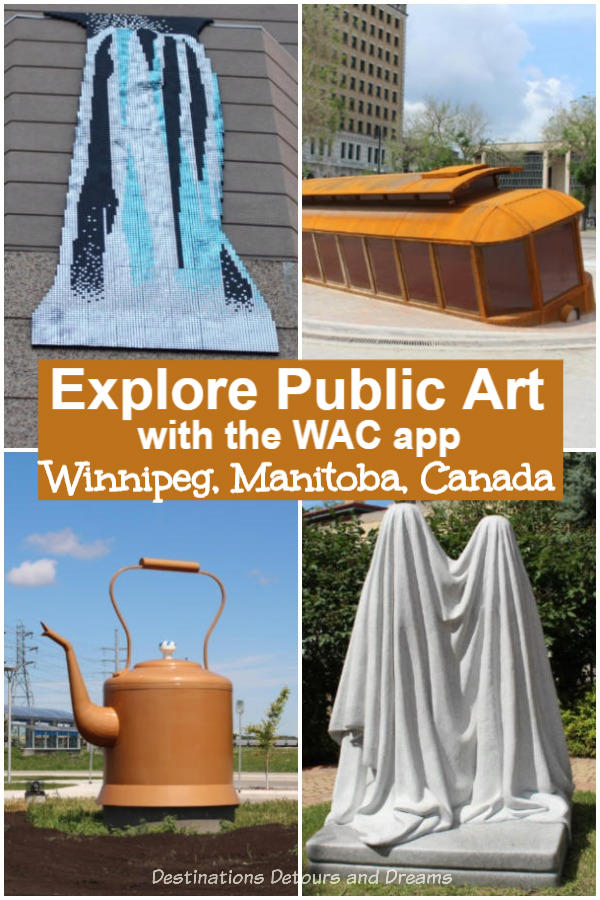

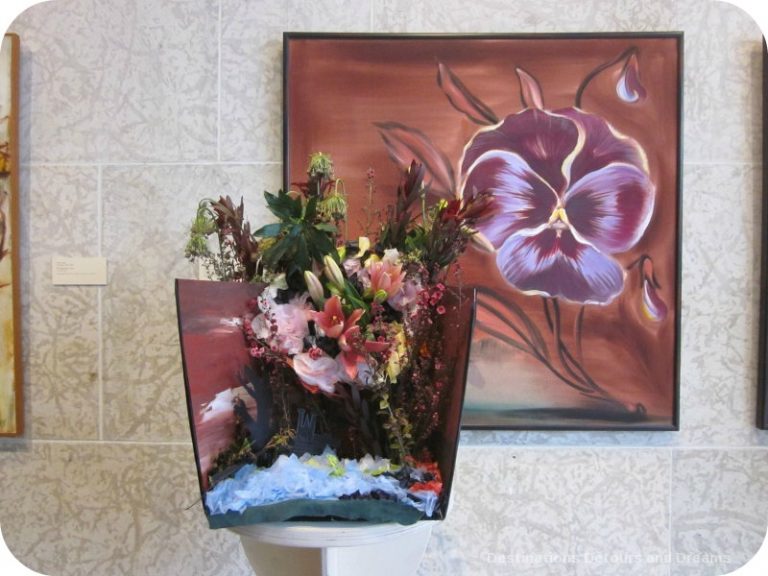
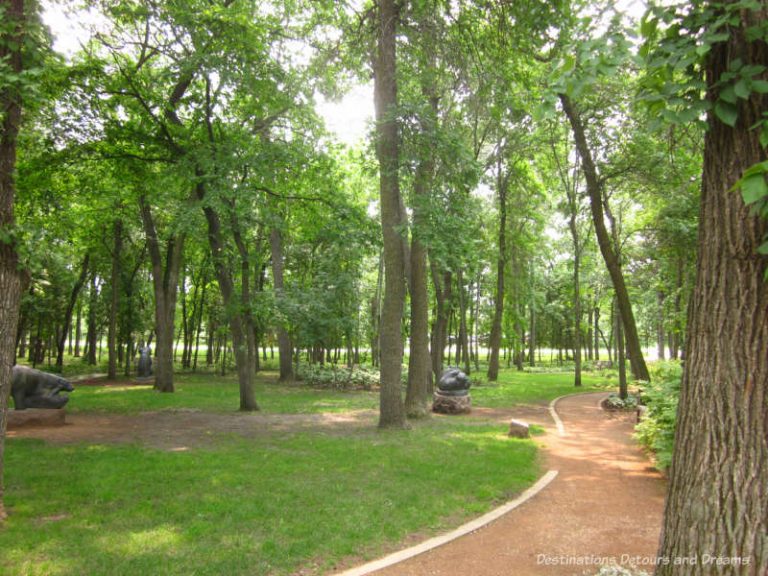

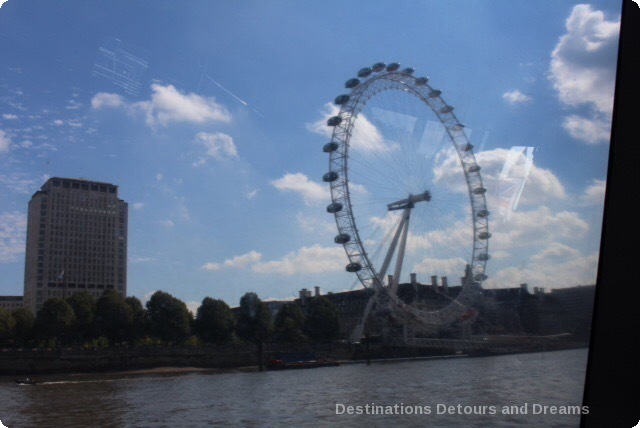
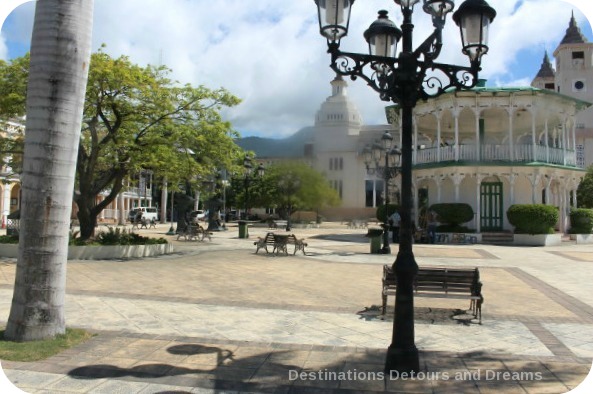
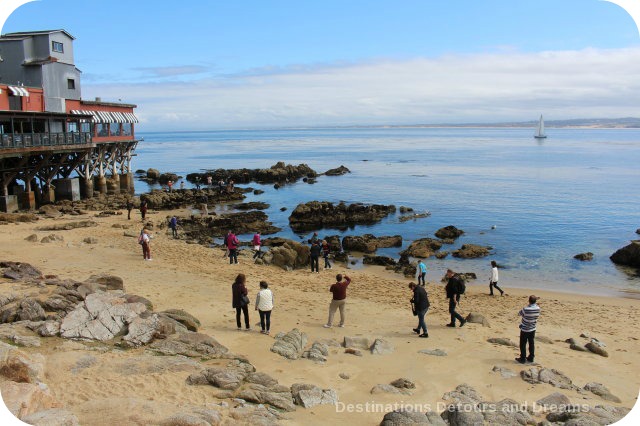
No idea how many participated in the 1919 strike, but that sunken trolley car is a great piece of public art.
Thx for this great post, Donna. I’ve not been to Winnipeg for a year now, but I can see that when I do finally get there, I have a lot of new public art installations to explore.
Doreen, although there are a number of interesting pieces that have been around for years, there has also been several impressive pieces added in the last couple of years. There are quite a few I still need to explore.